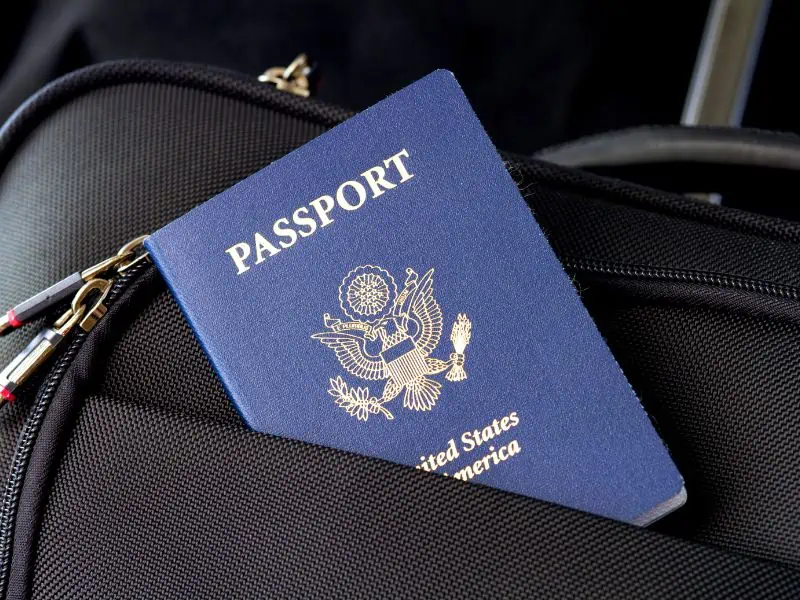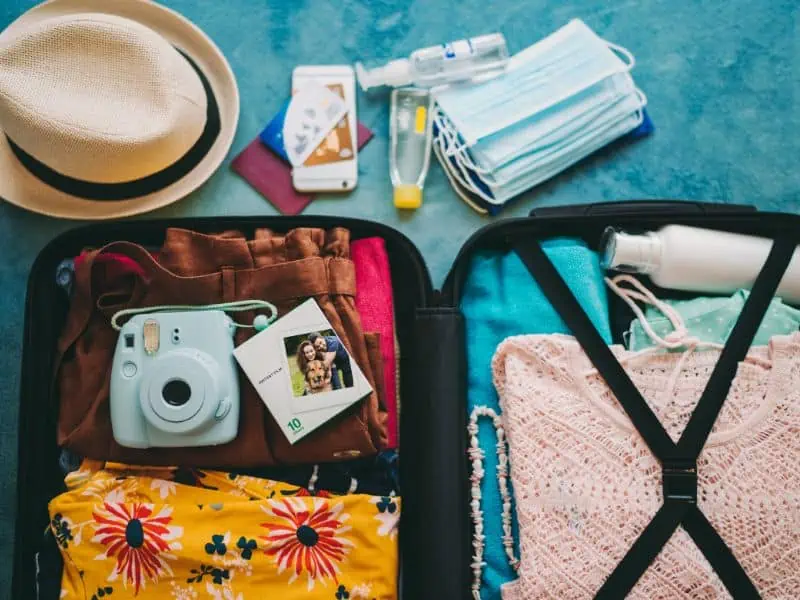Traveling to Europe from the US is a dream come true for many adventure seekers. The continent is renowned for its rich history, stunning landscapes, diverse cultures, and vibrant cities. In this article, we’ll cover several essential tips to enhance your European adventure and make the most of your journey.
From saving for a vacation, planning your trip and packing smart to embracing local customs, managing your finances, and staying safe, these tips will help both new travelers or well seasoned wanderers navigate the complexities of traveling in European Union countries with ease.
We’ll guide you on immersing yourself in the local culture, exploring the countries beyond the tourist attractions, sampling the country with mouthwatering cuisine, and capturing memories that will last a lifetime.

Tip 1: Plan Ahead and Research
To make the most of your trip to Europe, thorough planning and research are essential.
- Visa Schengen area Requirements: Check the visa entry requirements for the many countries you plan to visit Europe and ensure you have the necessary documentation well in advance.
- Travel Restrictions: Stay updated on any travel restrictions, entry requirements, or COVID-19 protocols that may be in place. Check government websites and consult with travel agencies for the latest European travel information.
- Destination Research: Research each popular destination you plan to visit for example: Italy, Spain, Iceland, Portugal, Norway, Greece. Learn about the local culture, traditions, and customs to respect and appreciate the local way of life.
- Must-See Attractions: Identify the key attractions and landmarks you wish to visit. Make a list and prioritize your sightseeing plans to maximize your time and cover the highlights of each city or region. Personally, I don’t like to plan every aspect of my trip, but I do want a general overview of the things I may want to see and experience (like staying in a castle!) so I can make better decisions on the ground and in the moment.
- Accommodations and Transportation: Research and book accommodations and transportation options for travelers in advance. Look for deals, compare prices, and consider the proximity to attractions and public transportation.
- Seasonal Considerations: Take into account the climate and seasonal variations of your European destinations, especially Christmastime. Pack accordingly and plan activities that align with the weather conditions.
Tip 2: Pack Smart and Light
Packing efficiently will not only save you space but also make your journey more comfortable and stress-free. (If you’re traveling abroad with kids, I have an extensive list specific to traveling with children here.)

- Clothing: Pack versatile and lightweight clothing suitable for the European weather. Opt for layers that you can mix and match. Consider the cultural norms and be sure to dress modestly when visiting religious sites.
- Comfortable Shoes: Europe often involves a fair amount of walking, oftentimes on uneven surfaces like cobblestone, so bring comfortable walking shoes or sneakers for travelers. Consider bringing a pair of dressier shoes for evenings or special occasions.
- Travel-Sized Toiletries: Purchase travel-sized toiletries or transfer your essentials into smaller containers to comply with carry-on regulations. Don’t forget items like sunscreen, hand sanitizer, and any necessary medications.
- Travel Adapters and Chargers: European countries like Italy and Germany use different plug types, so check and pack the appropriate travel adapters to charge your electronic devices. Ensure you have chargers for your phone, camera, or other gadgets you plan to bring.
- Travel Documents: Keep your travel documents organized and easily accessible. This includes your passport, identification, travel insurance, copies of important documents, and any required by countries visas or permits.
- Day Bag: Bring a small day bag or backpack for your daily excursions. It should be lightweight and comfortable to carry, with enough space for essentials like a water bottle, snacks, a camera, and a guidebook or map.
- Consider Weight Restrictions: If you plan to travel within Europe using budget airlines, be mindful of their weight restrictions for both checked and carry-on luggage. Yes, many will weigh and charge for your carry on baggage! Check flight schedules with Directflights.com. Familiarize yourself with their policies to avoid any additional charges or inconveniences.
Tip 3: Embrace Local Culture and Customs
One of the most enriching aspects of traveling to Europe is immersing yourself in the local culture. Here are some suggestions on how to embrace the culture and customs:
- Learn Basic Phrases: Familiarize yourself with a few basic phrases in the local language, such as greetings, thank you, and please. Locals appreciate the effort and it can enhance your interactions.
- Respect Local Customs: Research and understand the cultural norms and customs of the EU countries you’ll be visiting. This includes dress codes, dining etiquette, and social norms. Respect local traditions and be mindful of appropriate behavior, especially in sacred sites or religious ceremonies.
- Try Local Cuisine: Explore the local culinary scene and sample traditional dishes. Visit local markets for travelers and eateries to get an authentic taste of the region. Be adventurous and try new flavors and ingredients.
Tip 4: Manage Your Finances
Proper financial management will ensure a smooth journey without any unexpected financial hurdles.
14 Ways to Save Money on Your Next Family Vacation
- Notify Your Bank: Before your trip, inform your bank about your travel plans to avoid any issues with your credit or debit cards in EU countries. They can place a travel notification on your account to prevent any potential blocks.
- Currency Exchange: Research the currency of each country you’ll be visiting and exchange some currency before you depart. Look for reputable currency exchange locations or withdraw cash from ATMs upon arrival for better rates.
- Credit Cards: Carry at least one major credit card that has wide acceptance in Europe. Check if your card charges foreign transaction fees and consider getting a card with no or low fees to save on charges.
- Budget Wisely: Set a daily budget for expenses such as accommodations, meals, transportation, and activities. Research average costs in each destination to help you plan accordingly and avoid overspending.
Tip 5: Stay Connected and Safe
Staying connected and ensuring your safety are crucial during your European adventure.
- Communication: If you’re concerned with saving money on data charges while traveling, consider purchasing a local SIM card for your phone or activating an international roaming plan. Alternatively, rely on Wi-Fi hotspots available in cafes, hotels, and public spaces to stay connected.
- Travel Insurance: Protect yourself with insurance for travelers that covers medical emergencies, trip cancellations, and lost belongings. Carefully review the policy to ensure it suits your needs.
- Safety Precautions: Be vigilant and aware of your surroundings at all times. Avoid displaying valuable items and keep your belongings secure. Research any potential scams or tourist traps in each destination and take necessary precautions to stay safe.
Tip 6: Embrace Public Transportation
Utilizing public transportation in Europe can be cost-effective, efficient, and provide an authentic local experience.

- Trains: European countries have an extensive rail network, offering convenient connections between cities and countries. Look into rail passes or discounted tickets for flexibility and savings.
- Buses: Regional and intercity buses are another affordable option, especially for shorter distances or less popular routes.
- Metros and Trams: Many European cities have well-developed metro or tram systems, making it easy for travelers to navigate urban areas quickly and efficiently.
- Local Transportation Cards: Check if the destinations you’re visiting offer transportation cards or passes. These can provide unlimited travel on buses, trams, and metros within a certain timeframe.
Tip 7: Sample Local Cuisine
Exploring the local cuisine is an essential part of your European adventure. Immerse yourself in the culinary delights by considering this bit of advice:
- Local Markets: Visit local markets to discover fresh produce, regional specialties, and unique ingredients. Engage with vendors and sample their offerings for an authentic food experience.
- Street Food: Explore street food stalls and food trucks to taste quick and delicious local treats. From crepes in Paris to currywurst in Berlin, street food reflects the local flavors and culinary traditions.
- Traditional Restaurants: Seek out traditional restaurants serving regional dishes. Opt for establishments frequented by locals to experience authentic flavors and culinary techniques.
- Wine and Beer: Europe is renowned for its wine and beer culture. Don’t miss the opportunity to sample local wines in vineyards or visit breweries for a taste of traditional beers.
Tip 8: Explore Beyond the Tourist Hotspots
While iconic landmarks are must-see attractions, don’t limit yourself to the tourist hotspots. Some ways to discover hidden gems and lesser-known destinations:
- Off-the-Beaten-Path Towns: Venture beyond capital cities and popular tourist destinations to explore charming small towns and villages. These places offer a more intimate experience and a glimpse into local life.
- Nature Retreats: Seek out national parks, scenic coastlines, and picturesque countryside to connect with nature. Enjoy hiking trails, breathtaking landscapes, and outdoor activities away from the hustle and bustle of cities.
- Cultural Festivals: Check if there are any local festivals or cultural events taking place during your visit to Europe. These celebrations showcase traditions, music, dance, and culinary specialties unique to the region.
Tip 9: Stay Flexible and Embrace the Unexpected
While it’s essential to plan, it’s equally important to stay flexible and open to unexpected experiences.
- Serendipitous Moments: Leave room for spontaneous adventures and serendipitous encounters. Some of the most memorable experiences happen when you let go of rigid itineraries and embrace the unexpected.
- Local Recommendations: Interact with locals and fellow american travelers to gather recommendations and insights. They may suggest hidden gems or off-the-beaten-path destinations that you wouldn’t have discovered otherwise. This is how I had one of my most amazing Italian adventures EVER…on the back of a Vespa scooter with a friendly local as my guide!
Whether you’re a first-time traveler to a country in Europe or a seasoned globetrotter, these insights will provide you as travelers with valuable knowledge to enhance your experience, connect with the local communities, and create unforgettable moments. So, get ready to embark on a European adventure filled with exploration, discovery, and cultural immersion.
By following these 9 essential tips to enter Europe, you’ll be well-equipped to navigate the vibrant cities, picturesque landscapes, and centuries-old landmarks that await you in Europe. So, pack your bags, leave your worries behind, and get ready to embark on an extraordinary journey that will leave an indelible mark on your travel memories.
Bon voyage!